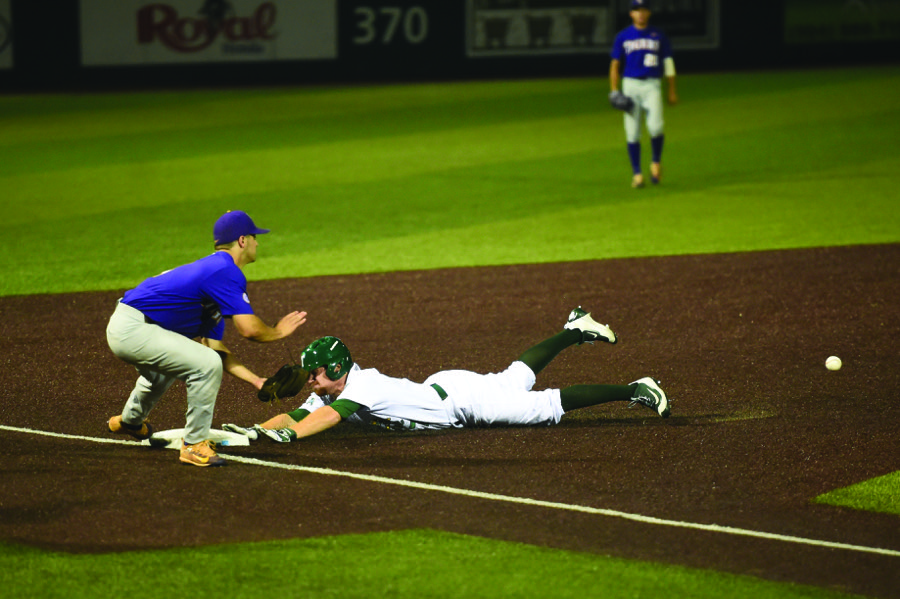Wave, Tigers rivalry stands test of time
Beyond the Red Sox and Yankees, Alexander Hamilton and Aaron Burr, or Batman and Superman, Tulane and LSU’s rivalry runs deeper and fiercer than any other. Tuesday night, the Tulane and LSU baseball teams faced off for the fourth time in two years.
The Wave not only won the game and swept the series but continued its now four-game win streak against LSU stretching back more than two years, the first time the Wave has done so since the 1975-77 baseball seasons.
For the Wave and the Tigers, two teams within 90 minutes of each other, the story of their competition dates back all the way to the beginning of Tulane Athletics itself. Louisiana’s first ever intercollegiate football game was between Tulane and LSU on Nov. 25, 1893. The Wave beat the Tigers that day 34-0.
The game would become known as the “Battle for the Rag,” named after the trophy flag awarded to the winner. The trophy is known as the Tiger Rag at LSU and the Victory Rag at Tulane. The flag is cut diagonally, with each team’s logo featured on one section and the seal of Louisiana in the center.
Since 1893, the teams have faced off in the Battle for the Rag a total of 98 times. LSU currently leads the rivalry 69-22-7, winning the last 18 football games. The last Battle for the Rag was played on October 31, 2009, and LSU posted its own shutout against the Wave 42-0.
Record numbers of Tulane and LSU fans came to the games, as Will Peneguy, assistant sports editor for the New Orleans Times-Picayune, reported in 1973. That year’s Battle for the Rag marked the largest crowd ever recorded for a nighttime college football game at the time.
“Long before the last stragglers in the record-breaking crowd of 86,340 made their way to their seats, the old stadium was rocking with noise and excitement,” Peneguy said.
The Wave and the Tigers have not played for the flag since 2009. Some speculate that this lapse is due to a decline in the event’s popularity since Tulane left the SEC in 1966. Others attribute it to the recent differences in the talent between the Wave and the Tigers. LSU has been nationally ranked for 11 of the last 18 Battles for the Rag.
Baseball, however, has continued to support a thriving rivalry between the Wave and the Tigers. Green Wave and Tiger baseball, a rivalry also formed in 1893 during Tulane baseball’s conception, played their 313th game on Tuesday. So far, LSU leads the rivalry 180-129-3, winning 13 of the last 19 matches despite Tulane winning the most recent four.
Like football, Tulane and LSU baseball often draws record crowds. Five of the top seven attendances for a Greer Field at Turchin Stadium baseball game, including Tuesday’s bout, were against the Tigers. Tuesday’s game drew an attendance of 5,000 fans, selling out Turchin Stadium for the first time this season.
Tulane faces various teams throughout the year, many of which are considered fierce adversaries, but the long history between the Tigers and the Wave is what makes the rivalry between the two in-state schools so strong.
When asked about the rivalry between the two teams in 2007, former baseball head coach Rick Jones praised it as one of college baseball’s historic face-offs.
“I don’t think there’s one that has as much history,” Jones said. “There’s a lot of rivalries, and a lot of them have started to build over the last few years because college baseball has jumped up. But when you look at the history of this one, I’d say it’s pretty special.”
Your donation will support the student journalists of Tulane University. Your contribution will allow us to purchase equipment and cover our annual website hosting costs.




